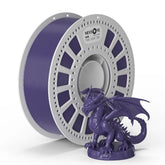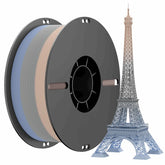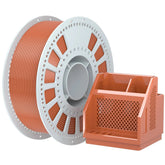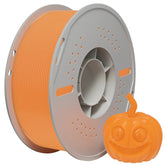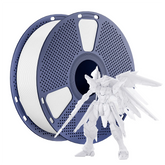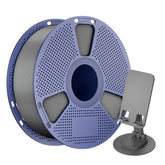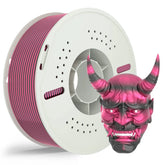How to Choose the Right 3D Printing Filament in 2025
How to Choose the Right 3D Printing Filament in 2025?
Choosing the right filament is the foundation of successful FDM (Fused Deposition Modeling) 3D printing. With advancements in material technology and the growing diversity of applications, 2025 brings more filament choices than ever before—each with distinct properties, printing requirements, and performance outcomes.
Whether you're a beginner aiming for clean, colorful models, or a professional engineer prototyping mechanical parts, understanding the materials you're working with is crucial. In this comprehensive guide, we’ll break down the most popular FDM filament types, what to consider before buying, and how to match materials to your specific needs.
What Makes a Filament "Right" for You?
Selecting the ideal filament depends on three key factors:
- Application – Is your print decorative or functional? Will it face heat, stress, or outdoor exposure?
- Printer Compatibility – Does your printer support high-temperature materials? Does it have a heated bed or an enclosed chamber?
- User Skill Level – Some materials are plug-and-play, while others require dialing in advanced settings.
Understanding Your Project Needs: The Foundation of Filament Choice
Before diving into material specifics, ask yourself these crucial questions:
- What is the purpose of your print? Is it a functional part, a decorative item, a prototype, or a tool?
- What properties do you need? Consider strength, flexibility, heat resistance, chemical resistance, surface finish, and transparency.
- What 3D printer do you have? FDM (Fused Deposition Modeling) printers are most common for filaments, but ensure compatibility with nozzle temperature, bed adhesion, and enclosure requirements.
- What's your skill level? Some filaments are more challenging to print with than others.
- What's your budget? Filament prices vary significantly based on material, brand, and special properties.
Common 3D Printing Filaments in 2025 and Their Best Uses
1. PLA (Polylactic Acid): The All-Rounder for Beginners and General Use
- Pros: Easy to print, low warping, wide range of colors, biodegradable, generally odorless during printing.
- Cons: Lower heat resistance, can be brittle, not ideal for outdoor use or high-stress parts.
- Best for: Decorative prints, prototypes, educational models, non-functional parts, artistic projects. Many new PLA blends (like PLA+ or tough PLA) offer improved strength.
2. PETG (Polyethylene Terephthalate Glycol): The Balanced Choice for Strength and Ease
- Pros: Stronger and more flexible than PLA, good layer adhesion, food-safe options available, weather-resistant, less prone to warping than ABS.
- Cons: Can be stringy, requires slightly higher print temperatures than PLA.
- Best for: Functional prototypes, mechanical parts, enclosures, outdoor applications, waterproof items, and anything needing a balance of strength and ease of use.
3. ABS (Acrylonitrile Butadiene Styrene): For Durable and Heat-Resistant Parts
- Pros: High strength, good toughness, excellent heat resistance, impact resistance, can be smoothed with acetone vapor.
- Cons: Prone to warping (requires heated bed and often an enclosed printer), emits fumes during printing, can be tricky for beginners.
- Best for: Functional parts, automotive components, tool handles, enclosures for electronics, interlocking parts, and durable prototypes.
4. TPU (Thermoplastic Polyurethane): When Flexibility is Key
- Pros: Highly flexible, elastic, abrasion-resistant, good shock absorption.
- Cons: Can be challenging to print (requires direct drive extruder or careful calibration), slow print speeds.
- Best for: Phone cases, flexible joints, gaskets, wearable items, drone parts, vibration dampeners.
5. Nylon (Polyamide): For High Strength and Wear Resistance
- Pros: Exceptionally strong, durable, flexible, good abrasion resistance, low friction, chemical resistant.
- Cons: Highly hygroscopic (absorbs moisture, requires drying before printing), challenging to print (requires high temperatures and often an enclosure).
- Best for: Gears, bearings, structural components, living hinges, and high-wear parts.
6. Specialty Filaments: Pushing the Boundaries
- Wood-Filled PLA: Contains wood particles for a wood-like appearance and texture, can be sanded or stained.
- Metal-Filled PLA: Contains metal powder for a metallic look and feel, can be polished.
- Carbon Fiber Filled (e.g., PLA-CF, PETG-CF, Nylon-CF): Infused with carbon fiber for increased stiffness, strength, and reduced weight. Ideal for structural components.
- Silk PLA: Offers a unique, shiny, and smooth finish, perfect for decorative items.
- Glow-in-the-Dark: Contains phosphorescent pigments to glow after being exposed to light.
- Conductive: Can conduct electricity for basic circuits.
Printer Compatibility Checklist
| Printer Feature | Supports These Filaments | Notes |
|---|---|---|
| Open Frame, No Heated Bed | PLA, PLA+ | Avoid ABS, Nylon |
| Heated Bed + Enclosure | ABS, Nylon, PETG | Stable environment needed |
| Direct Drive Extruder | TPU, PETG | Necessary for soft/flexible filaments |
| Bowden Tube Setup | PLA, PLA+, PETG | TPU is challenging to feed |
How to Match Filament to Your Application
| Application | Recommended Filaments | Why |
|---|---|---|
| Home Decor & Art | PLA, PLA+, Silk PLA | Easy to print, beautiful finish |
| Prototypes | PLA+, PETG | Durable and dimensionally accurate |
| Functional Parts | PETG, ABS | Mechanical strength & heat resistance |
| Wearables | TPU | Soft, flexible, shock-absorbing |
| Industrial Use | Nylon, Nylon-Carbon | High performance, structural use |
Common Mistakes When Choosing Filament (And How to Avoid Them)
- Ignoring Printer Limits – Not all printers can reach 260°C or maintain a stable enclosure. Know your hardware.
- Underestimating Storage Needs – PETG, TPU, and Nylon are hygroscopic. Invest in dry boxes or filament dryers.
- Relying on Price Alone – Cheaper filament can be inconsistent in diameter and color, leading to clogging and layer shifts.
